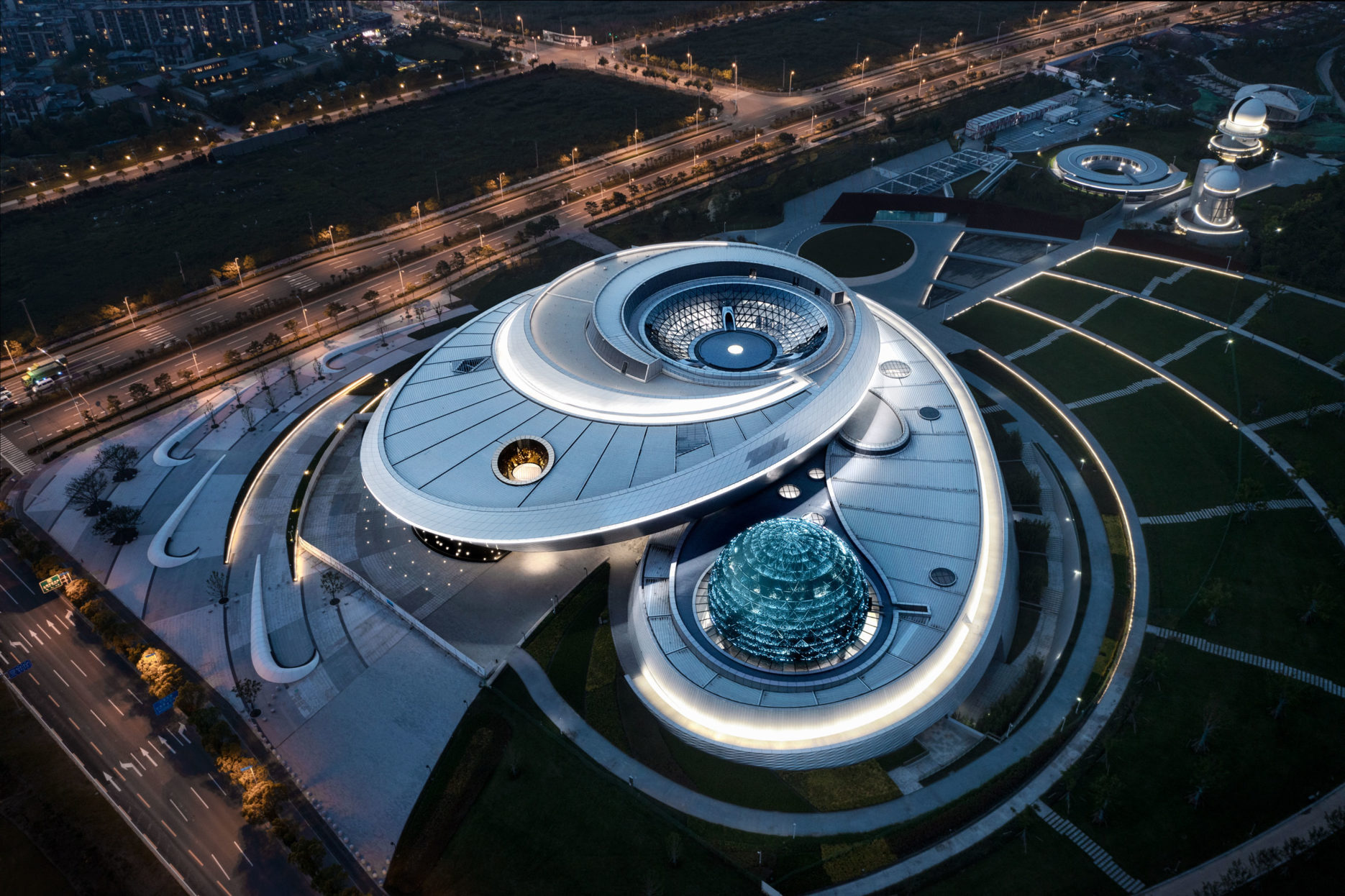The much-anticipated Shanghai Astronomy Museum officially opened on July 17, becoming the world’s largest planetarium. Located 70 kilometres from the city centre near Di Shui Lake and costing over 1 billion RMB ($154 million) to construct, it is set to become a popular destination for tourists visiting Shanghai.
The spiral-shaped building was designed by Ennead Architects and forms a ‘celestial orbit’ without straight lines and right angles. The design was influenced by a common mathematical question, the ‘three-body problem’, which examines how to calculate the motion of three celestial entities based on their gravity.
“In linking the new Museum to both scientific purpose and to the celestial references of buildings throughout history, the exhibits and architecture will communicate more than scientific content – they will illuminate what it means to be human in a vast and largely unknown universe.”
Thomas Wong, architect for Ennead Architects and designer of the museum
Covering 38,000 square meters, the museum is home to three permanent exhibition halls: “Homeland”, “Universe” and “Journey”, alongside special exhibitions and an observatory. The museum displays the history of Chinese astronomy and the future ambitions of China’s space exploration program.
At the opening event for the museum, samples from the moon surface that had been collected by China’s lunar exploration mission Chang’e 5 were placed in a crystal ball and put on display.
The museum will combine augmented reality (AR), virtual reality (VR), biometrics, and simulation experiences with lighting and sound effects. More than half of the 300 exhibits at the museum are interactive. The cutting-edge technologies enable visitors to have an immersive experience and are a selling point of the museum.
The museum is a celebration of China’s achievements in space as the country seeks to become a global leader in space technology and research. Earlier this year, China launched the main component of its first space station into orbit. The Tiangong station is due to be in operation next year and seeks to compete with the International Space Station which is run by NASA and others. China has ambitious plans for space exploration and plans to send its first crewed mission to Mars in 2033.
Read more:









